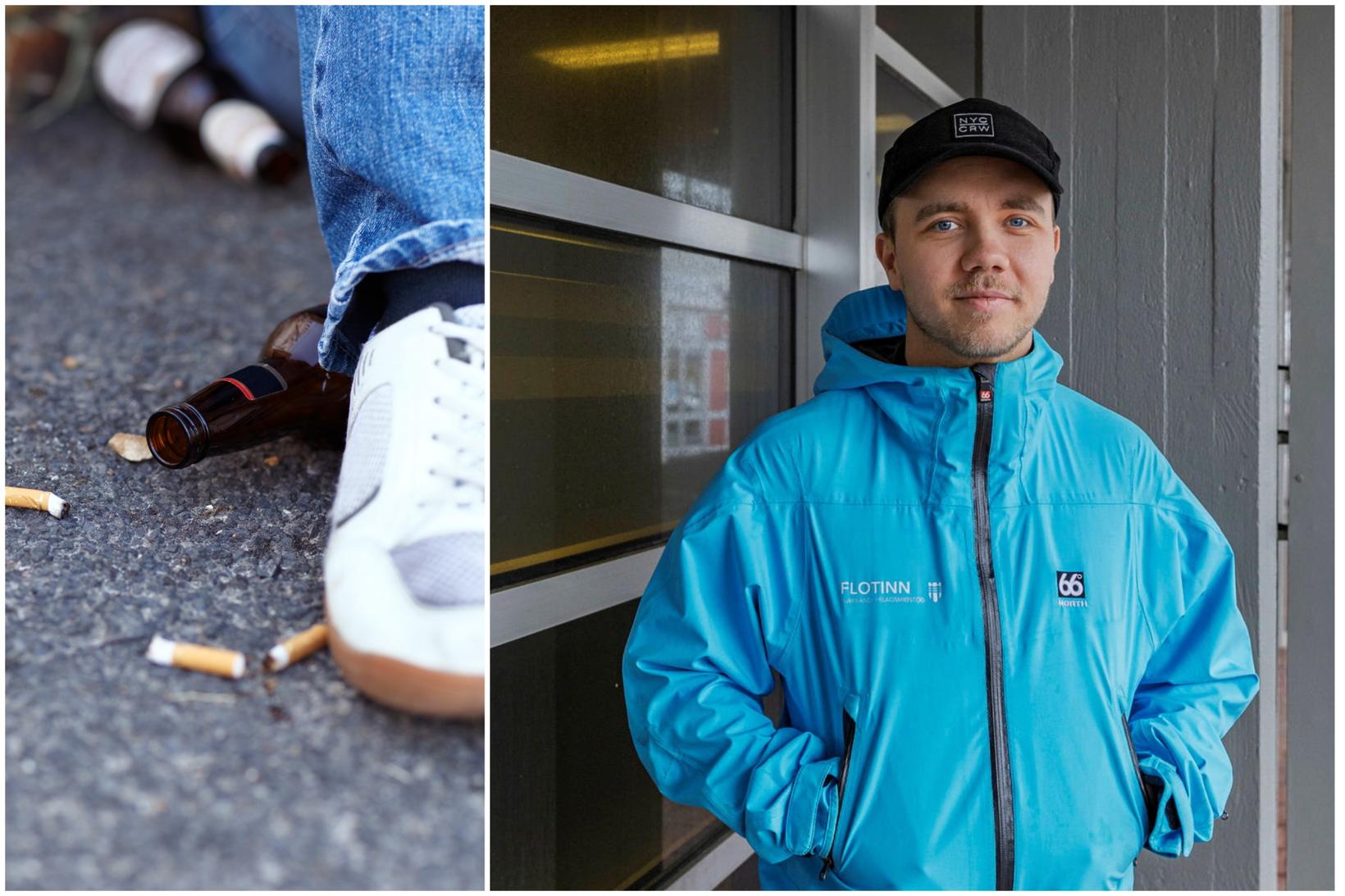Teenagers more exposed, but also more aware
Hjörleifur Steinn Þórisson, project manager for the Fleet, says good progress has been made in mapping hot spots in Reykjavík. Composite image/Colourbox/Árni Sæberg
The visibility of drug use among children and teenagers in Reykjavík is on the rise — and the users are getting younger. Still, many seem more aware of their actions, even as their behavior becomes more visible, according to staff from Flotinn ("The Fleet"), a mobile community center aimed at prevention and outreach.
Operating since 2020, the Fleet’s mission is to connect with young people in the city’s neighborhoods, particularly where group gatherings occur, with the goal of building trust, offering support, and discouraging risky behavior.
“The path into drug use is much shorter than it used to be,” says Hjörleifur Stein Þórisson, project manager of the Fleet. “The access is wider, and the age of those involved is dropping. That’s what worries us.”
A shift in attitudes and access
Þórisson notes that while only a small portion of teenagers engage in drug use or exhibit violent or disruptive behavior, the visibility of such behavior has increased.
“Teen drinking used to be more hidden. Now there’s more openness — they seem to care less about being seen,” he says. “Social media also plays a huge role. It creates connections and spreads information that’s often harmful for young people.”
This trend aligns with what child protection services across the country have reported: substance use is beginning earlier, and the effects are becoming more severe in a shorter time.
Despite these challenges, Þórisson emphasizes that most young people are doing well and engaging positively with their peers and communities.
Building trust in blue
The Fleet operates under Reykjavík's network of community centers. Its staff are trained youth workers who move between neighborhoods, especially during evenings and school breaks, in recognizable blue uniforms.
“We try to be visible and approachable,” says Þórisson. “And we’ve built strong connections with many young people. Some even come to us when they need support.”
Over time, staff have become adept at identifying so-called hot spots , areas where teens frequently gather and where group dynamics can sometimes lead to risky behavior. They document these locations and assess the atmosphere during their rounds.
“Not all group gatherings are a problem,” Þórisson stresses. “But we’re trained to read situations and step in calmly if we sense tension or see substance use.”
While the Fleet’s staff don’t have enforcement powers — that role belongs to the police — they work to defuse tensions and ensure safety until appropriate authorities arrive, if needed.
The power of early intervention
The Fleet is a first-level outreach service, often the first point of contact for vulnerable youth. Þórisson believes their success shows how critical early intervention and consistent adult presence can be.
“We’ve had cases where we built a relationship with a teen in a tough spot, and a year later, they come back and tell us they’re doing much better. That’s the kind of impact we’re here to make.”
He adds that collaboration between youth centers, field workers, schools, and families is vital. Community walks organized by parents and residents, especially in areas with known issues, also play an important role.
“Adult presence in public spaces matters. When young people see that they’re supported, it creates a more positive environment.”
Þórisson concludes with a call for continued support for preventive work:
“This isn’t just about reacting — it’s about building trust, showing up, and reaching kids before problems escalate. And for that, we need the right resources and teamwork across the community.”



/frimg/1/57/93/1579337.jpg)
/frimg/1/57/94/1579405.jpg)




